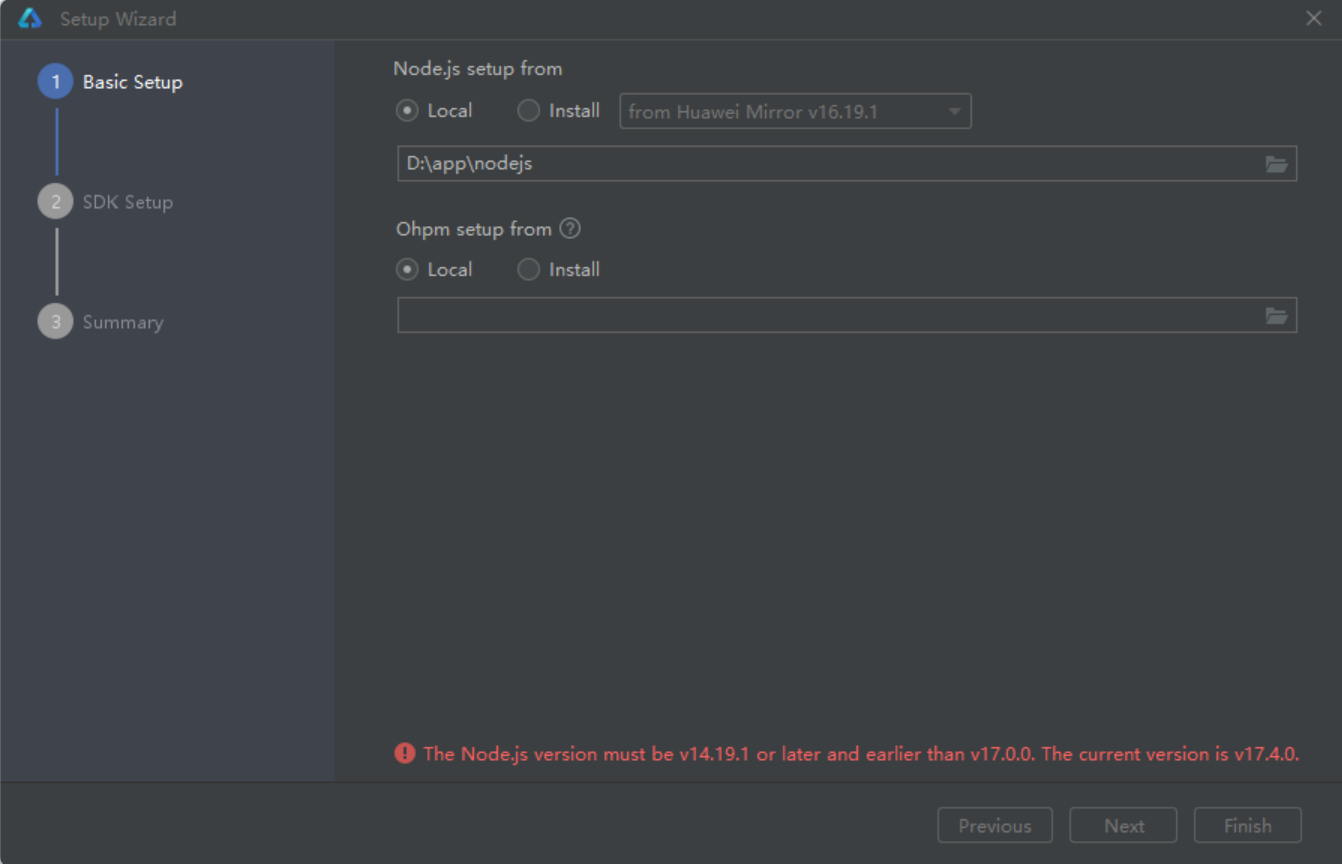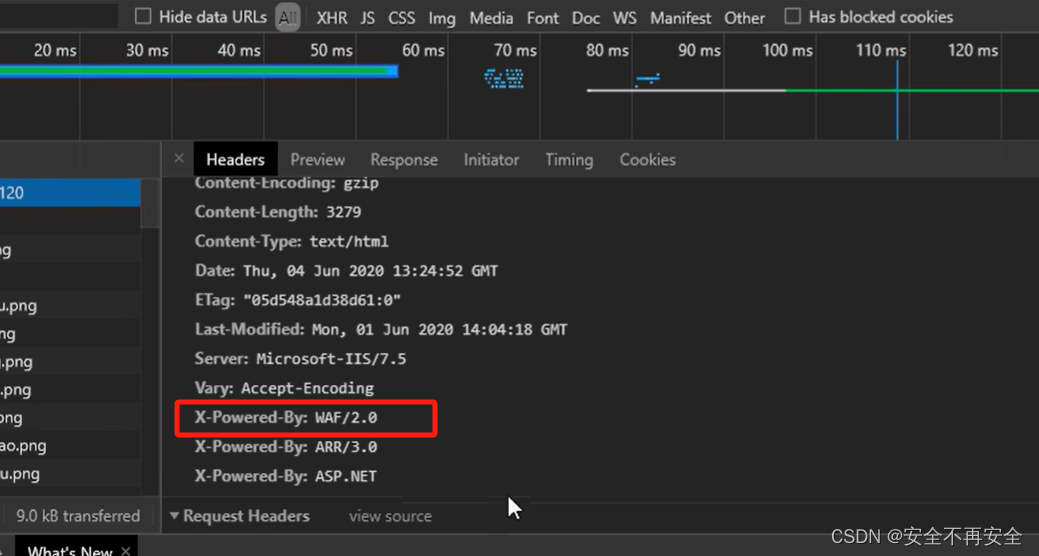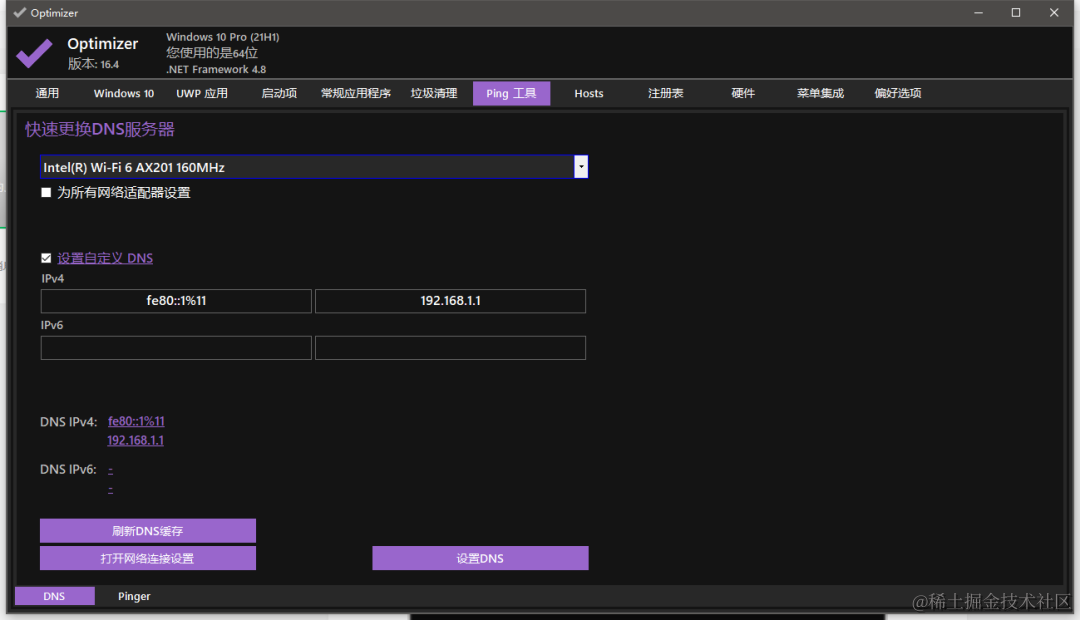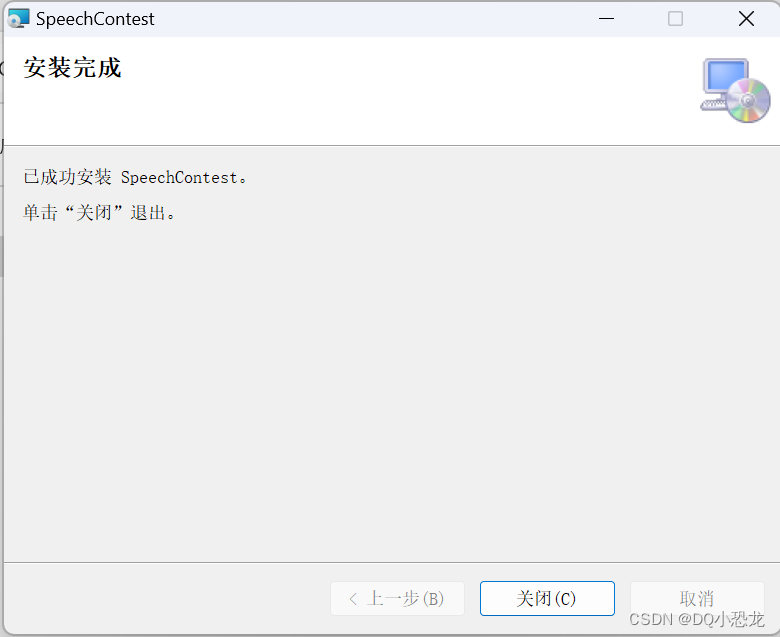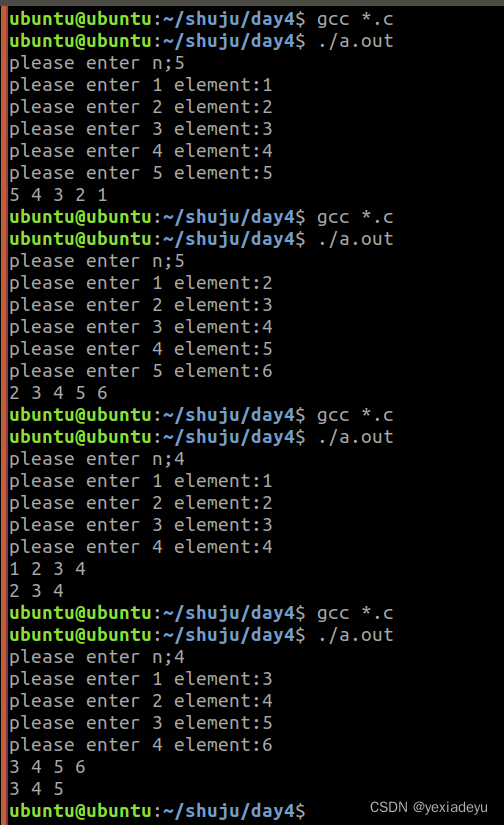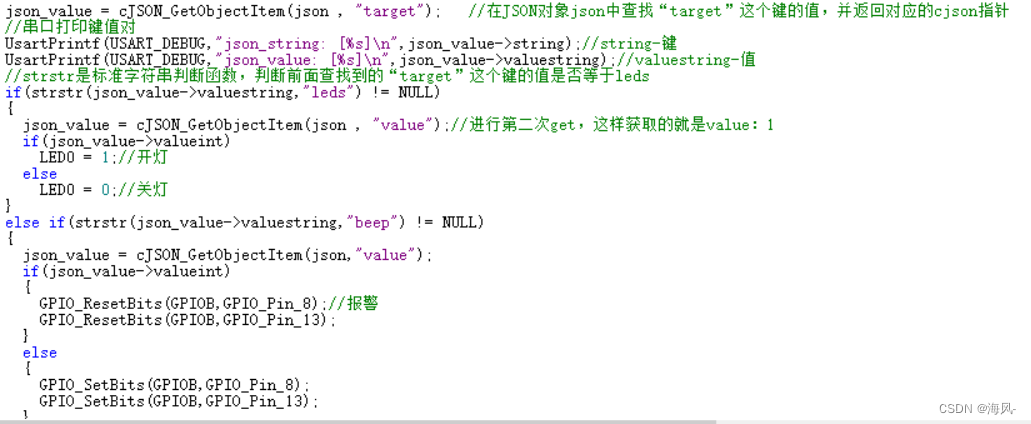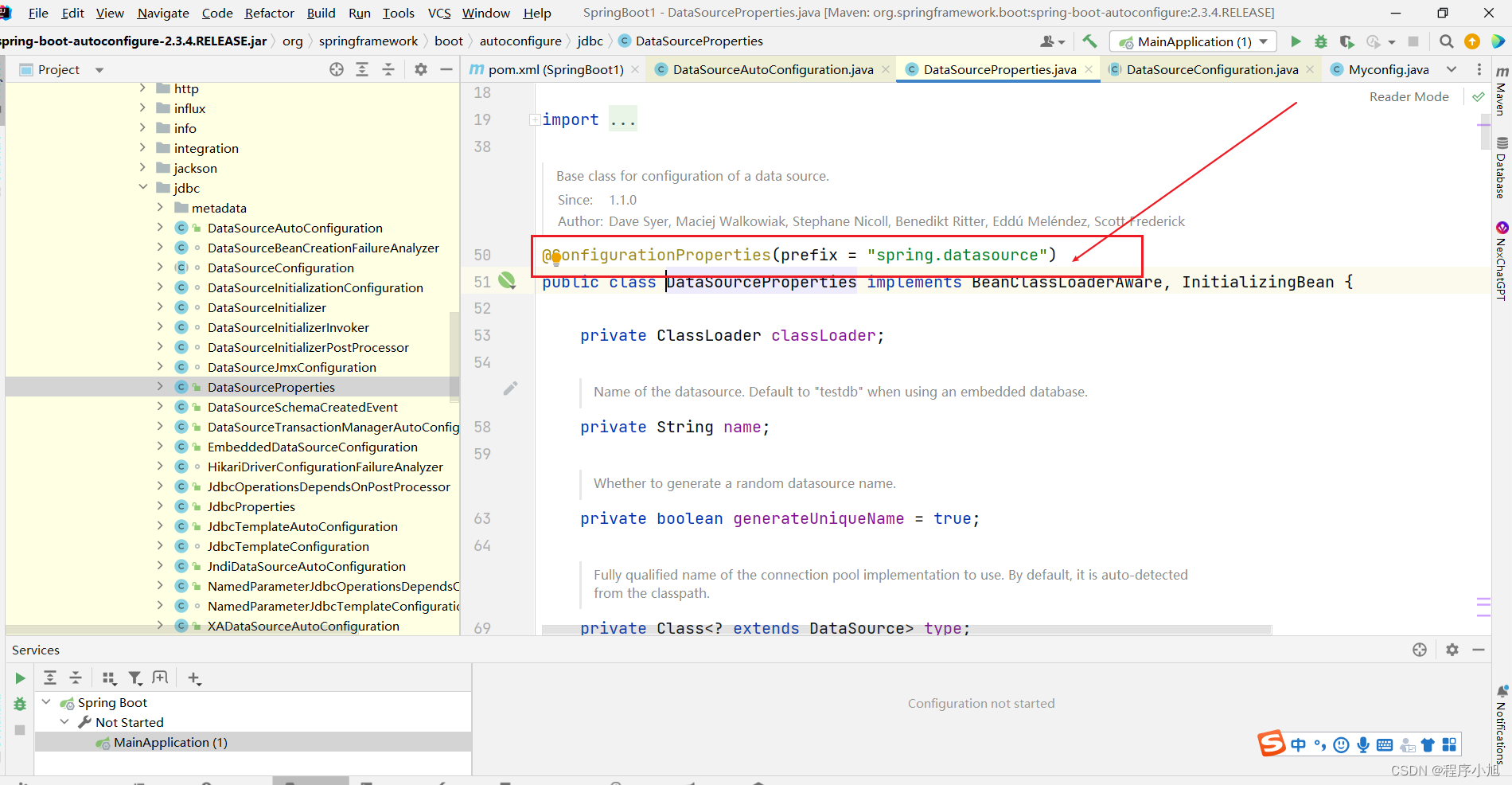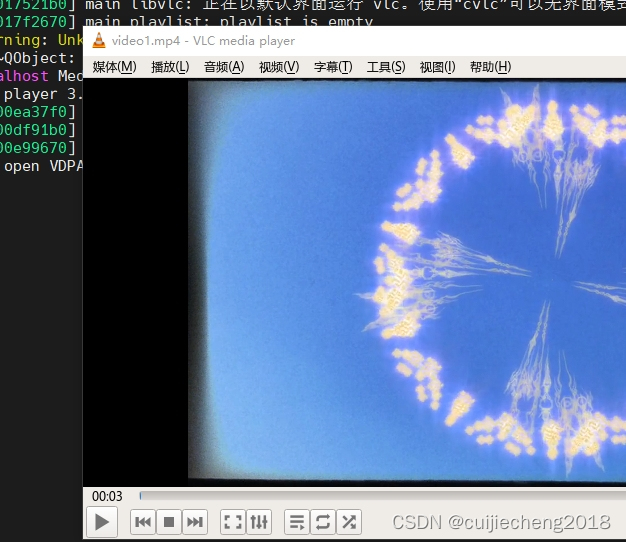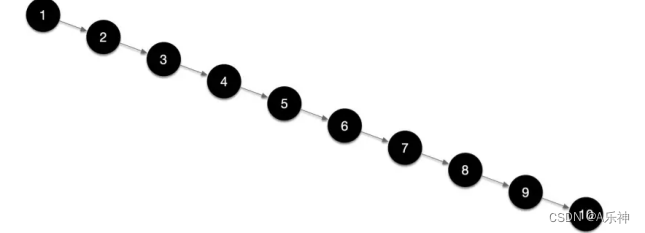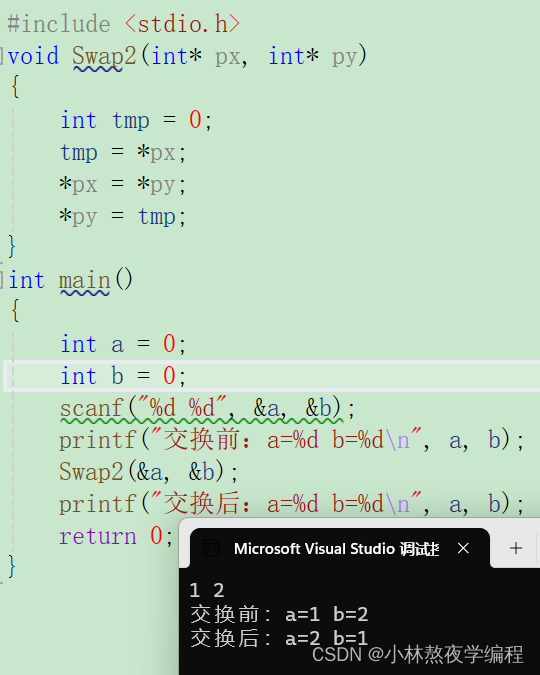文章目录
- 前言
- 1.list的介绍和使用
- 1.1 list的介绍
- 1.2 list的使用
- 1.3 list的迭代器的失效
- 2.list的模拟实现
- 2.1 结点的封装
- 2.2 迭代器的封装
- 2.2.1 正向迭代器
- 2.2.2 反向迭代器
- 2.3 list功能的实现
- 2.3.1 迭代器的实例化及begin()、end()
- 2.3.2 构造函数
- 2.3.3 赋值运算符重载
- 2.3.4 清除
- 2.3.5 尾插
- 2.3.6 任意位置插入
- 2.3.7 删除任意位置元素
- 2.3.8 头插
- 2.3.9 头删、尾删
- 3. list与vector的对比
- 4. 代码实现
- 4.1 list.h
- 4.2 reverse_iterator.h
- 4.3 test.c
- 5.总结
前言
前面学习的string与vector都是线性结构,本节介绍的list是我们遇到的第一个链式结构,此部分的迭代器封装比较难以理解,希望大家都能学有所成,学有所获。
1.list的介绍和使用
1.1 list的介绍
list的介绍文档
- list是可以在常数范围内在任意位置进行插入和删除的序列式容器,并且该容器可以前后双向迭代。
- list的底层是双向链表结构,双向链表中每个元素存储在互不相关的独立节点中,在节点中通过指针指向其前一个元素和后一个元素。
- list与forward_list非常相似:最主要的不同在于forward_list是单链表,只能朝前迭代,已让其更简单高
效。 - 与其他的序列式容器相比(array,vector,deque),list通常在任意位置进行插入、移除元素的执行效率
更好。 - 与其他序列式容器相比,list和forward_list最大的缺陷是不支持任意位置的随机访问,比如:要访问list
的第6个元素,必须从已知的位置(比如头部或者尾部)迭代到该位置,在这段位置上迭代需要线性的时间开销;list还需要一些额外的空间,以保存每个节点的相关联信息(对于存储类型较小元素的大list来说这可能是一个重要的因素)
1.2 list的使用
#include <iostream>
using namespace std;
#include <list>
#include <vector>
// list的构造
void TestList1()
{
list<int> l1; // 构造空的l1
list<int> l2(4, 100); // l2中放4个值为100的元素
list<int> l3(l2.begin(), l2.end()); // 用l2的[begin(), end())左闭右开的区间构造l3
list<int> l4(l3); // 用l3拷贝构造l4
// 以数组为迭代器区间构造l5
int array[] = { 16,2,77,29 };
list<int> l5(array, array + sizeof(array) / sizeof(int));
// 列表格式初始化C++11
list<int> l6{ 1,2,3,4,5 };
// 用迭代器方式打印l5中的元素
list<int>::iterator it = l5.begin();
while (it != l5.end())
{
cout << *it << " ";
++it;
}
cout << endl;
// C++11范围for的方式遍历
for (auto& e : l5)
cout << e << " ";
cout << endl;
}
// list迭代器的使用
// 注意:遍历链表只能用迭代器和范围for
void PrintList(const list<int>& l)
{
// 注意这里调用的是list的 begin() const,返回list的const_iterator对象
for (list<int>::const_iterator it = l.begin(); it != l.end(); ++it)
{
cout << *it << " ";
// *it = 10; 编译不通过
}
cout << endl;
}
void TestList2()
{
int array[] = { 1, 2, 3, 4, 5, 6, 7, 8, 9, 0 };
list<int> l(array, array + sizeof(array) / sizeof(array[0]));
// 使用正向迭代器正向list中的元素
// list<int>::iterator it = l.begin(); // C++98中语法
auto it = l.begin(); // C++11之后推荐写法
while (it != l.end())
{
cout << *it << " ";
++it;
}
cout << endl;
// 使用反向迭代器逆向打印list中的元素
// list<int>::reverse_iterator rit = l.rbegin();
auto rit = l.rbegin();
while (rit != l.rend())
{
cout << *rit << " ";
++rit;
}
cout << endl;
}
// list插入和删除
// push_back/pop_back/push_front/pop_front
void TestList3()
{
int array[] = { 1, 2, 3 };
list<int> L(array, array + sizeof(array) / sizeof(array[0]));
// 在list的尾部插入4,头部插入0
L.push_back(4);
L.push_front(0);
PrintList(L);
// 删除list尾部节点和头部节点
L.pop_back();
L.pop_front();
PrintList(L);
}
// insert /erase
void TestList4()
{
int array1[] = { 1, 2, 3 };
list<int> L(array1, array1 + sizeof(array1) / sizeof(array1[0]));
// 获取链表中第二个节点
auto pos = ++L.begin();
cout << *pos << endl;
// 在pos前插入值为4的元素
L.insert(pos, 4);
PrintList(L);
// 在pos前插入5个值为5的元素
L.insert(pos, 5, 5);
PrintList(L);
// 在pos前插入[v.begin(), v.end)区间中的元素
vector<int> v{ 7, 8, 9 };
L.insert(pos, v.begin(), v.end());
PrintList(L);
// 删除pos位置上的元素
L.erase(pos);
PrintList(L);
// 删除list中[begin, end)区间中的元素,即删除list中的所有元素
L.erase(L.begin(), L.end());
PrintList(L);
}
// resize/swap/clear
void TestList5()
{
// 用数组来构造list
int array1[] = { 1, 2, 3 };
list<int> l1(array1, array1 + sizeof(array1) / sizeof(array1[0]));
PrintList(l1);
// 交换l1和l2中的元素
list<int> l2;
l1.swap(l2);
PrintList(l1);
PrintList(l2);
// 将l2中的元素清空
l2.clear();
cout << l2.size() << endl;
}
1.3 list的迭代器的失效
前面说过,此处大家可将迭代器暂时理解成类似于指针,迭代器失效即迭代器所指向的节点的无效,即该节点被删除了。因为list的底层结构为带头结点的双向循环链表,因此在list中进行插入时是不会导致list的迭代器失效的,只有在删除时才会失效,并且失效的只是指向被删除节点的迭代器,其他迭代器不会受到影响。
void TestListIterator1()
{
int array[] = { 1, 2, 3, 4, 5, 6, 7, 8, 9, 0 };
list<int> l(array, array + sizeof(array) / sizeof(array[0]));
auto it = l.begin();
while (it != l.end())
{
// erase()函数执行后,it所指向的节点已被删除,因此it无效,在下一次使用it时,必须先给其赋值
l.erase(it);
++it;
}
}
// 改正
void TestListIterator()
{
int array[] = { 1, 2, 3, 4, 5, 6, 7, 8, 9, 0 };
list<int> l(array, array + sizeof(array) / sizeof(array[0]));
auto it = l.begin();
while (it != l.end())
{
l.erase(it++); // it = l.erase(it);
}
}
2.list的模拟实现
2.1 结点的封装
在 list 中存放的都是一个一个的节点,而一个节点又包含数据域以及指针域,因此需要对节点进行封装,便于存储到 list 中。
template <class T>
struct list_node
{
T _data;
struct list_node<T>* _next;
struct list_node<T>* _prev;
list_node(const T& x = T())
:_data(x)
,_next(nullptr)
,_prev(nullptr)
{}
};
2.2 迭代器的封装
2.2.1 正向迭代器
因为 list 中迭代器的解引用以及 ++ 都无法像 vector 和 string 中那样使用,因此需要对迭代器进行封装实现这些功能。迭代器本质上也是在对节点进行运算,因此它的成员也是 Node*,参考 list::iterator it = lt.begin(),lt.begin()返回的就是一个节点的地址。
template <class T, class Ref, class Ptr>
struct __list_iterator
{
typedef list_node<T> Node;
typedef __list_iterator<T, Ref, Ptr> self;
Node* _node;
__list_iterator(Node* node)
:_node(node)
{}
Ref operator*()
{
return _node->_data;
}
Ptr operator->()
{
return &_node->_data;
}
self& operator++()
{
_node = _node->_next;
return *this;
}
self& operator--()
{
_node = _node->_prev;
return *this;
}
self operator++(int)
{
self tmp(*this);
_node = _node->_next;
return tmp;
}
self operator--(int)
{
self tmp(*this);
_node = _node->_prev;
return tmp;
}
bool operator!=(const self& s)
{
return _node != s._node;
}
bool operator==(const self& s)
{
return _node == s._node;
}
};
有一个点需要讲解一下的是 -> 的重载,它返回的是结点数据的指针,可能会有点看不懂,我们来看一个例子:
class AA
{
public:
AA(int a1 = 0, int a2 = 0)
: _a1(a1)
, _a2(a2)
{}
int _a1;
int _a2;
};
void test_list5()
{
list<AA> lt;
lt.push_back(AA(1, 1));
lt.push_back(AA(2, 2));
lt.push_back(AA(3, 3));
list<AA>::iterator it = lt.begin();
while (it != lt.end())
{
cout << (*it)._a1 <<" " << (*it)._a2 <<endl;
cout << it->_a1 << " " << it->_a2 << endl;
//实际上应该是:it->->_a1 it->->_a2
++it;
}
}
->重载返回的是一个指针,所以实际上应该是需要两个箭头,第一个箭头是重载的箭头,第二个用来对返回的地址进行解引用的,但是由于两个箭头观赏性不好,就规定写的时候只写一个箭头。
首先要说明的是模板参数,template <class T, class Ref, class Ptr>大家可以对这个会有所困惑,对于一个迭代器,有非const迭代器,那么肯定也就有const迭代器,如果像之前那么写自然是可以的,但是我们如果实现了一个非const迭代器后,如果还需要使用到const迭代器,那么我们就需要重新将所有功能再实现一遍。
template <class t>
struct __list_const_iterator
{
typedef struct list_node<t> node;
typedef __list_const_iterator<t> self;
Node* _node;
__list_const_iterator(node* node)
:_node(node)
{}
const t& operator*()
{
return _node->_data;
}
const t* operator->()
{
return &_node->_data;
}
self& operator++()
{
_node = _node->_next;
return *this;
}
self& operator--()
{
_node = _node->_prev;
return *this;
}
self operator++(int)
{
self tmp(*this);
_node = _node->_next;
return tmp;
}
self operator--(int)
{
self tmp(*this);
_node = _node->_prev;
return tmp;
}
bool operator!=(const self& s)
{
return _node != s._node;
}
bool operator==(const self& s)
{
return _node == s._node;
}
};
就像这样,我们需要将所有已经实现过的功能再实现一遍,仅仅只是添加了一些const,那么有没有什么方法可以解决这种问题呢?那就是我 上面所写的template <class T, class Ref, class Ptr>这种方式,它增加了两个模板参数,一个是指T类型的引用,一个是指T类型的指针。我们在使用时只需要进行实例化,就可以完美的避免上面这种繁琐的情况。
typedef __list_iterator<T, T&, T*> iterator;
typedef __list_iterator<T, const T&, const T*> const_iterator;
至于为什么需要三个模板参数,是分别对应其本身的值 、其引用和其地址三种情况的。还需要注意一下的是区分前置++和后置++,在对其前置++进行重载时()里是空的,后置++的()里是写了int,也就是函数重载,通过对函数参数的不同来区分前置++和后置++。
2.2.2 反向迭代器
反向迭代器可以用正向迭代器来封装,
template<class iterator,class Ref,class Ptr>
class Reverse_Iterator
{
public:
typedef Reverse_Iterator Self;
Reverse_Iterator(iterator it)
:_it(it)
{}
Self& operator++()
{
--_it;
return *this;
}
bool operator!=(const Self& it)
{
return _it != it._it;
}
Ref operator*()
{
return *_it;
}
Ref operator->()
{
return _it.operator();
}
private:
iterator _it;
};
2.3 list功能的实现
2.3.1 迭代器的实例化及begin()、end()
由于迭代器在类的外面也需要进行使用,因此在实例化时需要放到public中,而上面封装的迭代器可以理解为它只是个模板,在这实例化后才会有相应的迭代器。
template<class T>
class list
{
// 只在类域里面使用,所以设置为私有,在 class 默认为私有,在 struct 中默认为公有
typedef struct list_node<T> Node;
public:
// 在类域外面也需要使用,因此要放到 public 里面
typedef __list_iterator<T, T&, T*> iterator;
typedef __list_iterator<T, const T&, const T*> const_iterator;
//typedef __list_const_iterator<T> const_iterator;
typedef Reverse_Iterator<iterator, T&, T*> reverse_iterator;
typedef Reverse_Iterator<const_iterator, const T&, const T*> const_reverse_iterator;
reverse_iterator rbegin()
{
return --end();
}
reverse_iterator rend()
{
return end();
}
const_iterator begin()const
{
return _head->_next;
}
const_iterator end()const
{
return _head;
}
iterator begin()
{
return _head->_next;
}
iterator end()
{
return _head;
}
2.3.2 构造函数
list的底层是双向循环链表,包含一个数据域和两个指针域。
void empty_init()
{
_head = new Node;
_head->_next = _head;
_head->_prev = _head;
}
list()
{
empty_init();
}
list(const list<T>& lt)
{
empty_init();
for (auto e : lt)
{
push_back(e);
}
}
2.3.3 赋值运算符重载
这样实现的原理与vector中的赋值运算符重载一模一样,不懂的小伙伴可以去上一篇文章中进行详细阅读。
void swap(const list<T>& lt)
{
std::swap(_head, lt._head);
std::swap(_size, lt._size);
}
list<T>& operator=(list<T> lt)
{
swap(lt);
return *this;
}
2.3.4 清除
从头到尾一个一个进行删除就可以了。
void clear()
{
iterator it = begin();
while (it != end())
{
it = erase(it);
}
}
2.3.5 尾插
后续部分的内容与前面的双向循环链表中的一样,如果不明白具体过程的小伙伴可以进行跳转链接观看,在双向循环链表中有详细图解。
void push_back(const T& x)
{
//Node* newnode = new Node(x);
//Node* tail = _head->_prev;
//_head->_prev = newnode;
//newnode->_next = _head;
//tail->_next = newnode;
//newnode->_prev = tail;
insert(end(), x);
}
2.3.6 任意位置插入
iterator insert(iterator pos, const T& val)
{
Node* newnode = new Node(val);
Node* prev = pos._node->_prev;
// prev newnode pos._node <------ 三个结点的位置关系
newnode->_next = pos._node;
pos._node->_prev = newnode;
newnode->_prev = prev;
prev->_next = newnode;
_size++;
return iterator(newnode);
}
2.3.7 删除任意位置元素
iterator erase(iterator pos)
{
Node* cur = pos._node;
Node* prev = cur->_prev;
Node* next = cur->_next;
prev->_next = next;
next ->_prev = prev;
_size--;
return iterator(next);
}
2.3.8 头插
直接复用插入即可。
void push_front(const T& x)
{
insert(begin(), x);
}
2.3.9 头删、尾删
需要注意的是end()指向的是最后一个元素的下一个位置,因此删除时要先–end()。
void pop_back()
{
erase(--end());
}
void pop_front()
{
erase(begin());
}
3. list与vector的对比
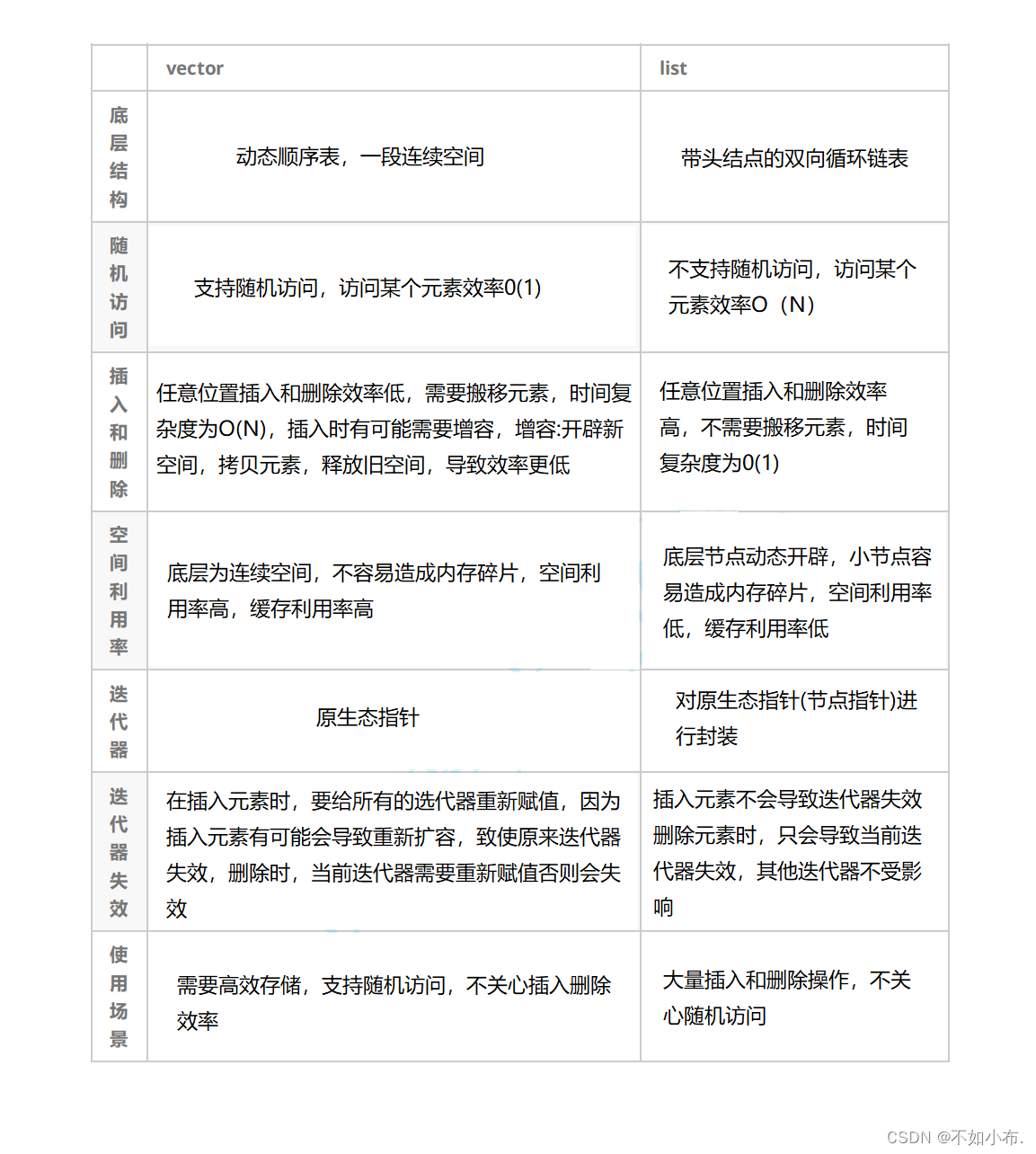
4. 代码实现
4.1 list.h
#pragma once
#include<iostream>
#include"reverse_iterator.h"
using namespace std;
namespace WY
{
//在 list_node<T> 中加<T>可以理解为 list_node 是一个类,比如之前模拟实现的 vector,在使用时都会写成 vector<T>,目前就可以近似的这么理解
//在 list 中存放的都是一个一个的节点,而一个节点又包含数据域以及指针域,因此需要对节点进行封装,便于存储到 list 中
template <class T>
struct list_node
{
T _data;
struct list_node<T>* _next;
struct list_node<T>* _prev;
list_node(const T& x = T())
:_data(x)
,_next(nullptr)
,_prev(nullptr)
{}
};
// 因为 list 中迭代器的解引用以及 ++ 都无法像 vector 和 string 中那样使用,因此需要对迭代器进行封装实现这些功能
// 迭代器本质上也是在对节点进行运算,因此它的成员也是 Node*,参考 list<int>::iterator it = lt.begin(),lt.begin()返回的就是一个节点的地址
template <class T, class Ref, class Ptr>
struct __list_iterator
{
typedef list_node<T> Node;
typedef __list_iterator<T, Ref, Ptr> self;
Node* _node;
__list_iterator(Node* node)
:_node(node)
{}
Ref operator*()
{
return _node->_data;
}
Ptr operator->()
{
return &_node->_data;
}
self& operator++()
{
_node = _node->_next;
return *this;
}
self& operator--()
{
_node = _node->_prev;
return *this;
}
self operator++(int)
{
self tmp(*this);
_node = _node->_next;
return tmp;
}
self operator--(int)
{
self tmp(*this);
_node = _node->_prev;
return tmp;
}
bool operator!=(const self& s)
{
return _node != s._node;
}
bool operator==(const self& s)
{
return _node == s._node;
}
};
/*template <class t>
struct __list_const_iterator
{
typedef struct list_node<t> node;
typedef __list_const_iterator<t> self;
node* _node;
__list_const_iterator(node* node)
:_node(node)
{}
const t& operator*()
{
return _node->_data;
}
const t* operator->()
{
return &_node->_data;
}
self& operator++()
{
_node = _node->_next;
return *this;
}
self& operator--()
{
_node = _node->_prev;
return *this;
}
self operator++(int)
{
self tmp(*this);
_node = _node->_next;
return tmp;
}
self operator--(int)
{
self tmp(*this);
_node = _node->_prev;
return tmp;
}
bool operator!=(const self& s)
{
return _node != s._node;
}
bool operator==(const self& s)
{
return _node == s._node;
}
};*/
template<class T>
class list
{
// 只在类域里面使用,所以设置为私有,在 class 默认为私有,在 struct 中默认为公有
typedef struct list_node<T> Node;
public:
// 在类域外面也需要使用,因此要放到 public 里面
typedef __list_iterator<T, T&, T*> iterator;
typedef __list_iterator<T, const T&, const T*> const_iterator;
//typedef __list_const_iterator<T> const_iterator;
typedef Reverse_Iterator<iterator, T&, T*> reverse_iterator;
typedef Reverse_Iterator<const_iterator, const T&, const T*> const_reverse_iterator;
reverse_iterator rbegin()
{
return --end();
}
reverse_iterator rend()
{
return end();
}
const_iterator begin()const
{
return _head->_next;
}
const_iterator end()const
{
return _head;
}
iterator begin()
{
return _head->_next;
}
iterator end()
{
return _head;
}
void empty_init()
{
_head = new Node;
_head->_next = _head;
_head->_prev = _head;
}
list()
{
empty_init();
}
~list()
{
clear();
delete _head;
_head = nullptr;
}
list(const list<T>& lt)
{
empty_init();
for (auto e : lt)
{
push_back(e);
}
}
lt2 = lt1
//list<T>& operator=(const list<T>& lt)
//{
// if (lt != *this)
// {
// clear();
// for (auto e : lt)
// {
// push_back(e);
// }
// }
// return *this;
//}
void swap(const list<T>& lt)
{
std::swap(_head, lt._head);
std::swap(_size, lt._size);
}
list<T>& operator=(list<T> lt)
{
swap(lt);
return *this;
}
void clear()
{
iterator it = begin();
while (it != end())
{
it = erase(it);
}
}
void push_back(const T& x)
{
//Node* newnode = new Node(x);
//Node* tail = _head->_prev;
//_head->_prev = newnode;
//newnode->_next = _head;
//tail->_next = newnode;
//newnode->_prev = tail;
insert(end(), x);
}
void push_front(const T& x)
{
insert(begin(), x);
}
void pop_back()
{
erase(--end());
}
void pop_front()
{
erase(begin());
}
iterator insert(iterator pos, const T& val)
{
Node* newnode = new Node(val);
Node* prev = pos._node->_prev;
// prev newnode pos._node
newnode->_next = pos._node;
pos._node->_prev = newnode;
newnode->_prev = prev;
prev->_next = newnode;
_size++;
return iterator(newnode);
}
iterator erase(iterator pos)
{
Node* cur = pos._node;
Node* prev = cur->_prev;
Node* next = cur->_next;
prev->_next = next;
next ->_prev = prev;
_size--;
return iterator(next);
}
private:
Node* _head;
size_t _size;
};
void test_list1()
{
list<int> lt;
lt.push_back(1);
lt.push_back(2);
lt.push_back(3);
lt.push_back(4);
lt.push_back(5);
list<int>::iterator it = lt.begin();
while (it != lt.end())
{
cout << *it << " ";
++it;
}
cout << endl;
for (auto e : lt)
{
cout << e << " ";
}
cout << endl;
}
//void Print_list(const list<int>& lt)
//{
// list<int>::const_iterator it = lt.begin();
// while (it != lt.end())
// {
// cout << *it << " ";
// ++it;
// }
// cout << endl;
//}
//template<typename T>
//void Print_list(const list<T>& lt)
//{
// // 加 typename 的原因:编译器在编译时只会对实例化的模板进行编译,而这里的 list<T> 并没有被实例化,参数里的 list<T> 在进行传参时会被实例化
// // 而函数体内的并没有进行实例化,所以在编译时编译器无法识别 const_iterator 是内嵌类型还是静态成员变量,所以在编译是会报错
// // 而加了 typename,会让编译器跳过这个检查阶段,我目前的理解是在用 lt.begin() 对 it 进行赋值时才会对前面的 list<T> 进行实例化(待查证)
// typename list<T>::const_iterator it = lt.begin();
// while (it != lt.end())
// {
// cout << *it << " ";
// ++it;
// }
// cout << endl;
//}
template<typename Container>
void Print_container(const Container& con)
{
typename Container::const_iterator it = con.begin();
while (it != con.end())
{
cout << *it << " ";
++it;
}
cout << endl;
}
void test_list2()
{
list<int> lt;
lt.push_back(1);
lt.push_back(2);
lt.push_back(3);
lt.push_back(4);
lt.push_back(5);
//Print_list(lt);
Print_container(lt);
}
void test_list3()
{
list<int> lt;
lt.push_back(1);
lt.push_back(2);
lt.push_back(3);
lt.push_back(4);
lt.push_back(5);
list<int>::reverse_iterator it = lt.rbegin();
while (it != lt.end())
{
cout << *it << " ";
++it;
}
cout << endl;
Print_container(lt);
}
void test_list4()
{
list<int> lt;
lt.push_back(1);
lt.push_back(2);
lt.push_back(3);
lt.push_back(4);
lt.push_back(5);
list<int>::iterator it = lt.begin();
while (it != lt.end())
{
cout << *it << " ";
it++;
}
cout << endl;
}
}
4.2 reverse_iterator.h
这部分是反向迭代器的封装。
#pragma once
template<class iterator,class Ref,class Ptr>
class Reverse_Iterator
{
public:
typedef Reverse_Iterator Self;
Reverse_Iterator(iterator it)
:_it(it)
{}
Self& operator++()
{
--_it;
return *this;
}
bool operator!=(const Self& it)
{
return _it != it._it;
}
Ref operator*()
{
return *_it;
}
Ref operator->()
{
return _it.operator();
}
private:
iterator _it;
};
4.3 test.c
#define _CRT_SECURE_NO_WARNINGS 1
#include"list.h"
int main()
{
//WY::test_list1();
//WY::test_list2();
//WY::test_list3();
WY::test_list4();
return 0;
}
5.总结
list有关迭代器的封装比较困难复杂,它这个封装一层套一层,所以较难理解,可能有的地方 我表达的不是很清楚,大家可以多加阅读以及结合相关部分的文章进理解。并且如果有难以理解的地方,可以私信我,我看到之后会帮助大家解决问题,希望能与大家共同进步。
如果大家发现有什么错误的地方或者有什么问题,可以私信或者评论区指出喔。我会继续深入学习C++,希望能与大家共同进步,那么本期就到此结束,让我们下期再见!!觉得不错可以点个赞以示鼓励!!


